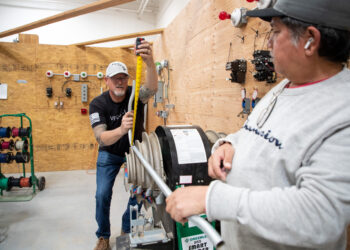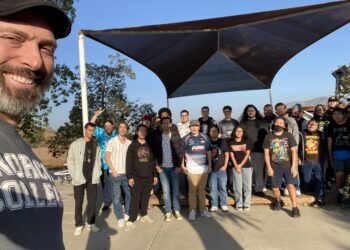Healthcare in the Inland Empire

Talk about job security.
“You always see job openings when you’re talking about nursing and healthcare,” said Victor Valley College Nursing Professor Sally Thibeault. “Whether it’s acute care, home care, clinics, everywhere you look there is a demand for nurses. And that demand is going to continue to grow because of an aging population and the graying of the nursing ranks.”
The statistics bear her out. In 2016, there were more than 48,900 nursing-related jobs in the Inland Empire/Desert Region, and employment – including registered nurses, nursing assistants, licensed practical, licensed vocational nurses, and home health aides – is expected to grow by 5,725 each year through 2021, according to projections from the California Centers of Excellence, a leading source of regional workforce information for the California Community Colleges system.
That’s why seven community colleges in Riverside and San Bernardino counties offer a range of nursing and nursing-related workforce training programs. And nearly every student who has successfully completed a program is now working in their field of study.
Nearly eight in 10 registered nursing jobs advertised in the region required an associate degree, and area community colleges are awarding more than 500 associate degrees in nursing annually. Riverside City College leads the pack with an average of 168 degrees awarded each year, followed by San Bernardino Valley (68), Chaffey and Victor Valley (67), College of the Desert (54), Mt. San Jacinto (53), and Copper Mountain (26).
But healthcare involves more than nursing and nursing-related occupations, and community colleges are on the front line in providing the skills and training to fill those jobs, too. Crafton Hills College, for example, offers a program in respiratory care, and Victor Valley College offers programs in respiratory therapy. Chaffey and San Bernardino Valley colleges host pharmacy technician programs. And College of the Desert offers a sports medicine program.
Seventy-six percent of program completers are employed within six months. The median wage? Registered nurses in the Inland Empire/Desert Region were earning an average annual salary of $95,900 at the end of 2017. Licensed practical and licensed vocational nurses were earning $48,800 annually. Meanwhile, nursing assistants were earning a median annual wage of $31,000 annually, and home health aides were earning $30,600.
Demand is projected to increase in the coming years, with wages expected to follow. By 2030, according to the Public Policy Institute of California, the state’s 65-and-over population will grow by 87 percent and the number of people requiring skilled nursing care could increase by 32,000. What’s more, the Inland Empire and the Bay Area have the largest discrepancies between existing nursing home capacity and projected demand, with demand in Riverside and San Bernardino counties projected to increase by 69 percent.
To help meet emerging demands for health care delivery, the California Community College Chancellor’s Office and it’s Economic and Workforce Development Program has established the California Community College Health Care Initiative to provide necessary education and training programs. Community colleges, including those in Riverside and San Bernardino counties, work closely with industry partners to ensure that their programs are up to date.
“Not everyone has the time or the money to go straight to a four-year college or university,” said Thibeault. “A lot of our students are working, are caring for family, so we’re serving a population that is often overlooked, and yet the quality of our programs is just as good as what you might find anywhere.”



